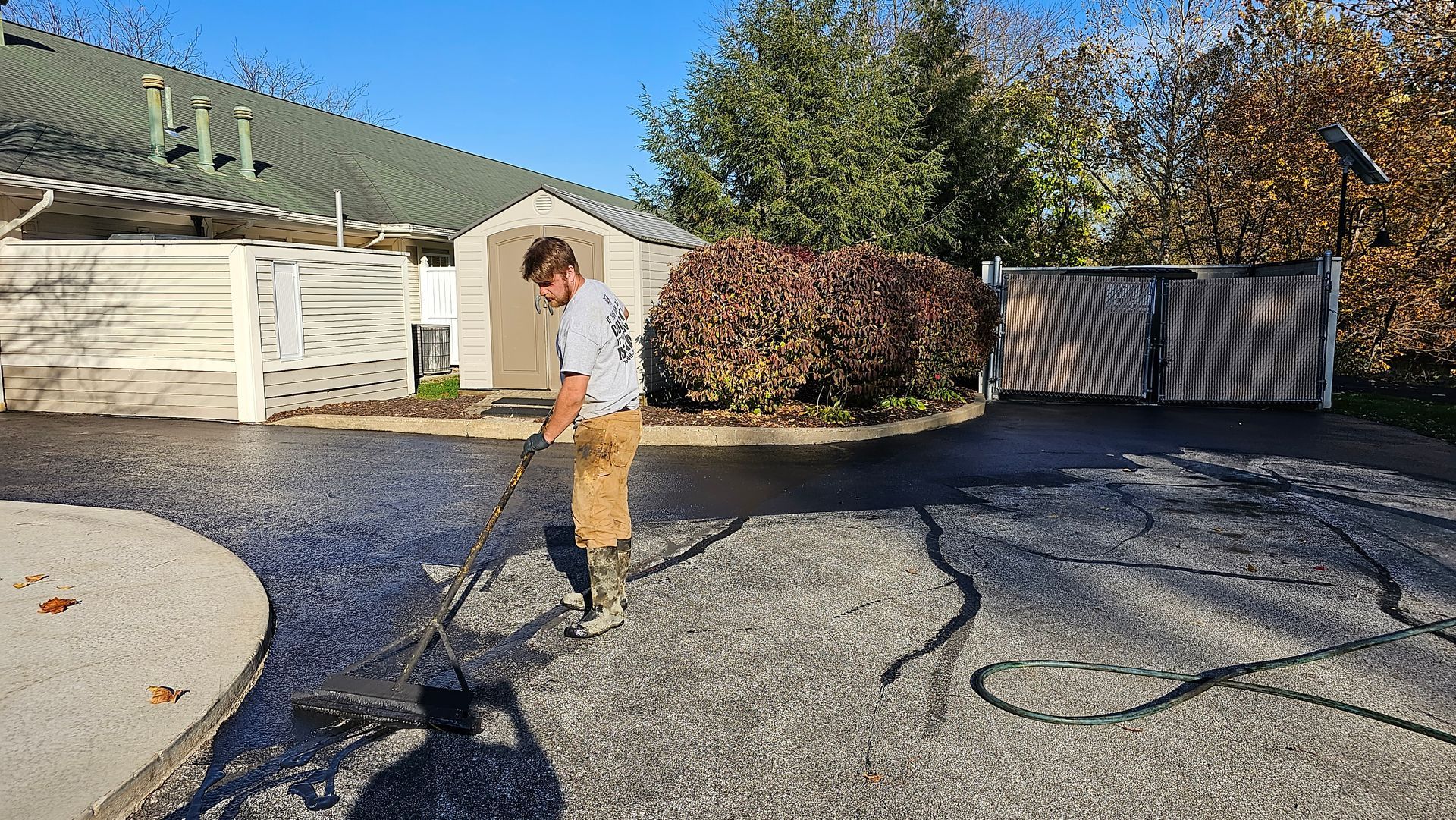Summer Maintenance Tips for Your Driveway or Parking Lot
Simple DIY upkeep tips and when to call in the pros.
☀️ How Warm Weather Affects Your Pavement
Did you know asphalt and concrete react differently to extreme temperatures?
- Asphalt is better suited for
cooler climates — it handles the cold well, but in extreme heat, it can become soft and oily.
- Concrete performs better in
warmer climates , but it’s more vulnerable in the winter. Water can seep in, freeze, and cause cracks.
Concrete generally stays cooler than asphalt due to its lighter color, while asphalt absorbs sunlight and gets hotter to the touch. If you’re a PA local like us, heat extremes might not be common — but these facts are still helpful to know, especially for those in warmer regions.
Maintenance Tips to Extend the Life of Your Pavement
The first step in your maintenance should be to inspect it and see if you can find any notable cracks, potholes, or uneven surfaces. Take note if it looks like you need a new sealcoat.
- Typically, asphalt that needs a new sealcoat will look faded and cracked.
- For concrete, you can do a water test. If the water absorbs straight into the concrete instead of beading up, it may be time for a re-sealing.
- Generally,
both surfaces should be
resealed every other year on average, depending on their condition. You can also have bigger cracks crack filled to help preserve the surface.
The second step in your maintenance plan should be to sweep the surface of any leaves and debris. Power washing may be required to help remove stains, dirt buildup, or algae.
- If you do notice that you have some deeper stains, cracking, or faded color, it is most likely time to reseal. Luckily, we offer that as a service! Feel free to contact us using the form below or call us to get a quote. Some benefits of sealing are the improved aesthetic of course, but also UV protection, extended life, stain prevention, and decreased risk of more cracks.
Another easy way to maintain a good-looking pavement is to manicure the landscape surrounding by trimming any vegetation surrounding it. Keep in mind, you do not want to plant any trees or plants with thick roots near the pavement as it could grow underneath and cause cracks and lift the pavement.
Lastly, consider the drainage in your area. Poor drainage could cause the foundations of your pavement to deteriorate quicker. Addressing these issues will help extend the life of your surfaces and prevent further issues down the line.
When Should I Call the Pros?
If you notice:
- Large cracks
- Potholes
- Major uneven sections
…it may be time for a professional resurface or repour. Regular maintenance helps delay these big repairs and catching them early makes all the difference. It may seem burdensome but taking a few hours this summer to maintain your pavement can save you lots of money down the road!
Helpful Reminders for Summer Upkeep
- Avoid parking in the same spot on asphalt during extreme heat — it can cause indentations.
- Schedule sealing before winter to get ahead of the weather.
- Set seasonal reminders for quick pavement check-ins.
Contact Us For A Free Quote
LInks to share this blog!






